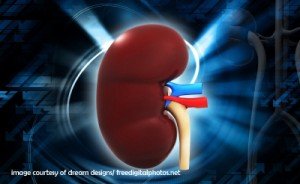Traditional Chinese Medicine Views and Treatment of Hypothyroidism
Helen H. Hu, OMD, L/Ac.
Hypothyroidism is under activity of the thyroid gland that leads to inadequate production of thyroid hormones and a slowing of vital body functions.
- Facial expressions become dull, the voice is hoarse, speech is slow, eyelids droop, and the eyes and face become puffy.
- Usually only one blood test is needed to confirm the diagnosis.
- People with hypothyroidism need to take a thyroid hormone for the rest of their life.
Hypothyroidism is common, especially among older people, particularly women; about 10% of older women are affected. It can, however, occur at any age. Very severe hypothyroidism is called myxedema.
Hypothyroidism can develop after treatment of hyperthyroidism or thyroid cancer because use of radioactive iodine or drugs that interfere with the body’s ability to make thyroid hormones or surgical removal of the thyroid gland leads to a lack of thyroid hormone production.
A chronic lack of iodine in the diet is the most common cause of hypothyroidism in many developing countries. However, iodine deficiency is a rare cause of hypothyroidism in the United States because iodine is added to table salt and is also used to sterilize the udders of dairy cattle and thus is present in dairy products
Symptoms
Insufficient thyroid hormones cause body functions to slow. Symptoms are subtle and develop gradually. They may be mistaken for depression, especially among older people. Facial expressions become dull, the voice is hoarse and speech is slow, eyelids droop, and the eyes and face become puffy. Many people with hypothyroidism gain weight, become constipated, and are unable to tolerate cold. The hair becomes sparse, coarse, and dry, and the skin becomes coarse, dry, scaly, and thick. Some people develop carpal tunnel syndrome, which makes the hands tingle or hurt. The pulse may slow, the palms and soles may appear slightly orange (carotenemia), and the side parts of the eyebrows slowly fall out. Some people, especially older people, may appear confused, forgetful, or perplexed—signs that can easily be mistaken for Alzheimer’s disease or other forms of dementia
In TCM view of Hypothyroidism categorized as “over exertion (Xu Lao) and Jia Di. There are two patterns within the hypothyroids.
A. Heart and kidney yang deficiency: 
People with this pattern often have heart palpitations, shortness of breath, low tolerance and lower back pain with coldness sensations on the back. Some patients might have edema on the lower leg. Other clinical symptoms are low libido, clear and long urination, especially during the night.
- Spleen and kidney yang deficiency.
Patients with this pattern may have diarrhea, or watery with non-digested food in the stool with pale complexion and feel coldness of four limbs. Patients might have mixed patterns; however, one pattern is predominated. Beside seeking professional help for the condition either western medicine or traditional Chinese medicine with herbal formula, diet therapy is very beneficial to hypothyroidism. It not only treats mild hypothyroidism, or reducing certain medication, but more importantly ensures a natural way for well being for those patients
Here are some examples of food therapy for patients who suffer hypothyroid
1. Go Ji Lamb:
Go ji berry: 20g
Astragals 30g
Lamb 200 g (cut into square pieces)
Ginger 15g
Cooking wine; 20 g
Crystal sugar: 30g
Put all ingredients into put bring to boil, the lower temperature cook till meat softens.
Serve once a day, drink the soup and eat the meat.
2. Black Chicken
one black chicken ( 100 g better to use male )
Rou cong round: 20g
Ginger 15 g
Salt
Add all ingredients with chicken together in a pot , bring it to boil, then lower temperature to continue cooking until chicken is cooked.
Server with meal. Once a day. (one chicken – two servings)
Chicken egg: 2
Chuan Du Zhong: 12 g
Chuan xu duan: 12 g
Put all egg and herbs in ceramic pot with water. Boiling eggs until done. Then peel the shell from the egg and slow cooking the egg in the herbal juice again for 15-20 min.
Serve: drink the herbal juice and eat the egg. Once a day.
4. Cinnamon congee:
Cinnamon bark: 10 g (powdered)
Spring rice: 50g
With water, cook both spring rice and cinnamon together
5. Yi zhi Congee; (one day serving)
Yi zhi ren 5g
Spring rice: 50g
Pinch of salt
Add water to make rice soup . serve twice day, warm both in the morning and night)
6. Black sesame congee:
Black sesame seeds: 30g (baked in the fried pan, and then crash the sesame seeds)
Spring rice: 100g
Put spring rice and water to make rice soup. When soup is done, add the crushed black sesame seeds in the soup and cook for short time. Serve once a day. Two weeks as a course of treatments
7. Zhu yu ginger congee
Shan zhu yu: 120g
Dried ginger: 5g
Spring rice: 100g
Add all ingredients in ceramic cooking pot to make soup, cook it till all soft and pasty. Add a little white sugar before it done if preference. Serve: once a day, 5 days as course of treatment.
Dr. Helen Hu has studied Traditional Chinese Medicine (TCM) since the age of 12, a cardiologist and practitioner of integrated medicine for 9 years. She immigrated to the United States in 1991. In 1997 Dr. Hu passed the “United States Licensing Medical Exam” while simultaneously obtaining her Oriental Medical Degree (OMD). Dr. Hu is a specialist in Herbal medicine, nationally licensed in Acupuncture and has a Philosophy of life structured around Oriental traditions. She utilizes her expertise in these treatments along with a passion and wisdom for longevity to treat a variety of health conditions. To find more information about her, go to http://www.omdweb.net/




6 Responses to TCM Views and Treatment of Hypothyroidism